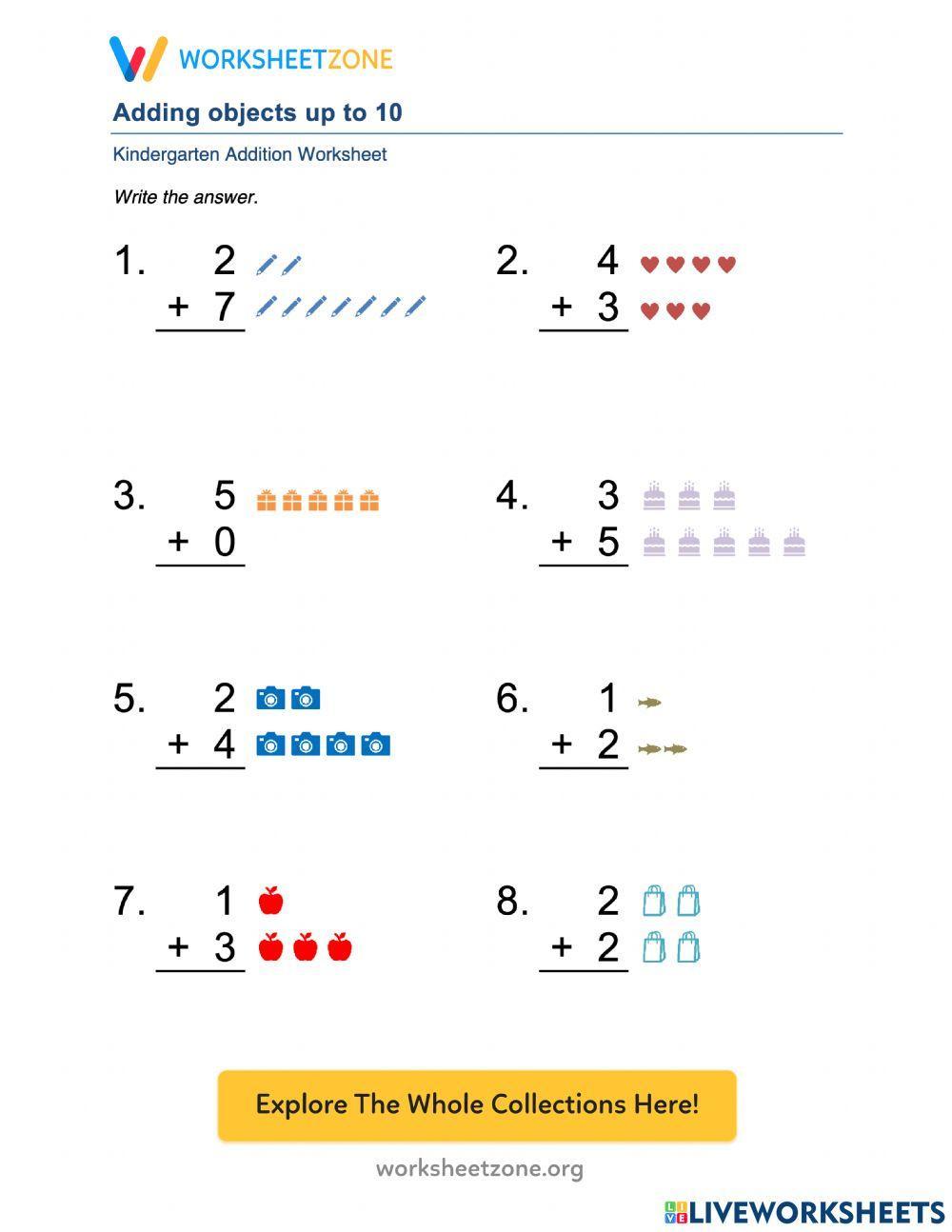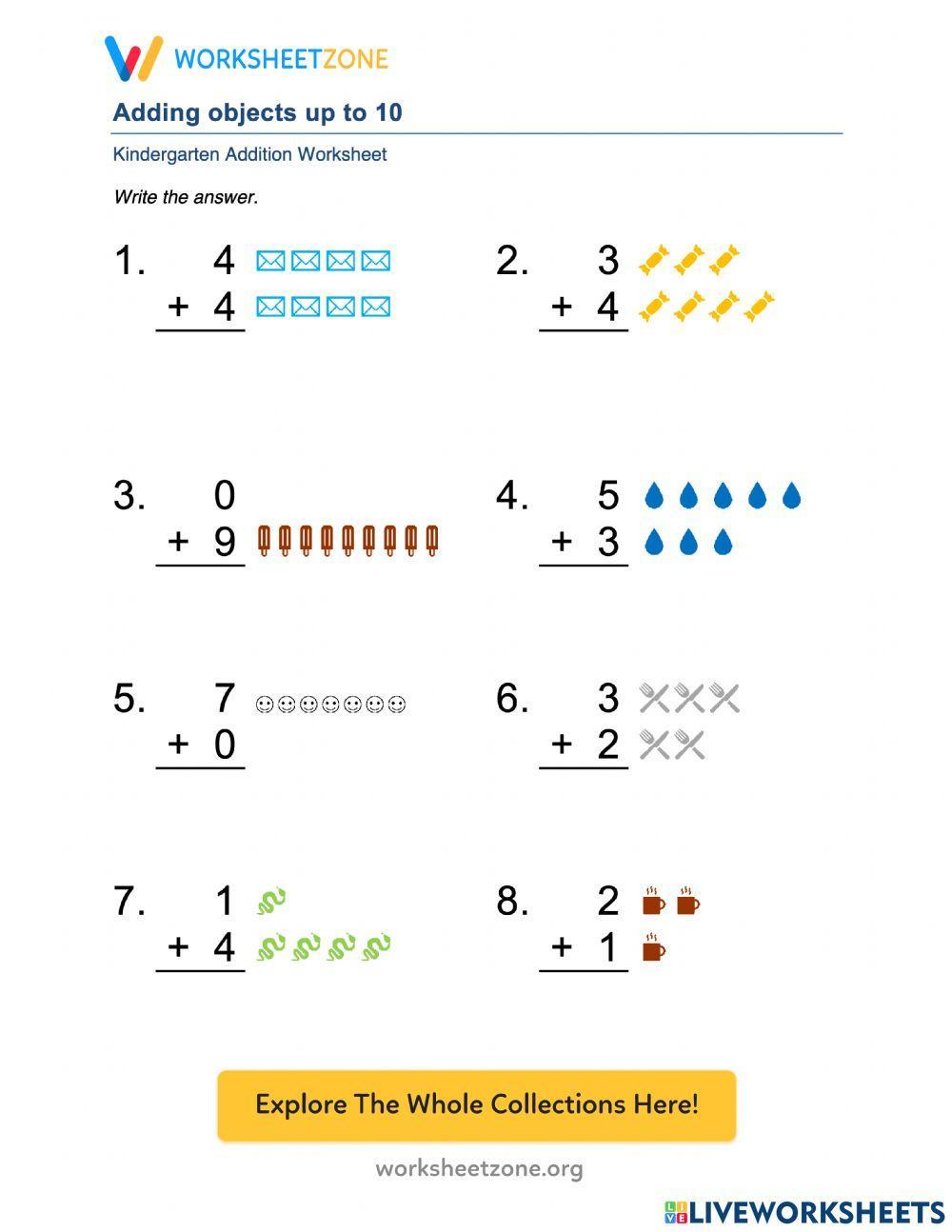Loading ad...
Member for
1 ปี 11 เดือนAge: 5-10
Level: Grade 1
Language: English
(en)
ไอดี: 2044324
21/05/2022
Country code: US
Country: United States
Main content: Addition (2026381)
students will be instructed to count items to answer addition problems. The questions' format emphasizes the idea of addition by illustrating the equivalence of adding objects and numbers directly. Because these worksheets are made for preK students, so that the value of calculation will not exceed ten.
Other contents: Addition 1-10,Count the objects and add the numbers (up to 10)
Share / Print Worksheet

